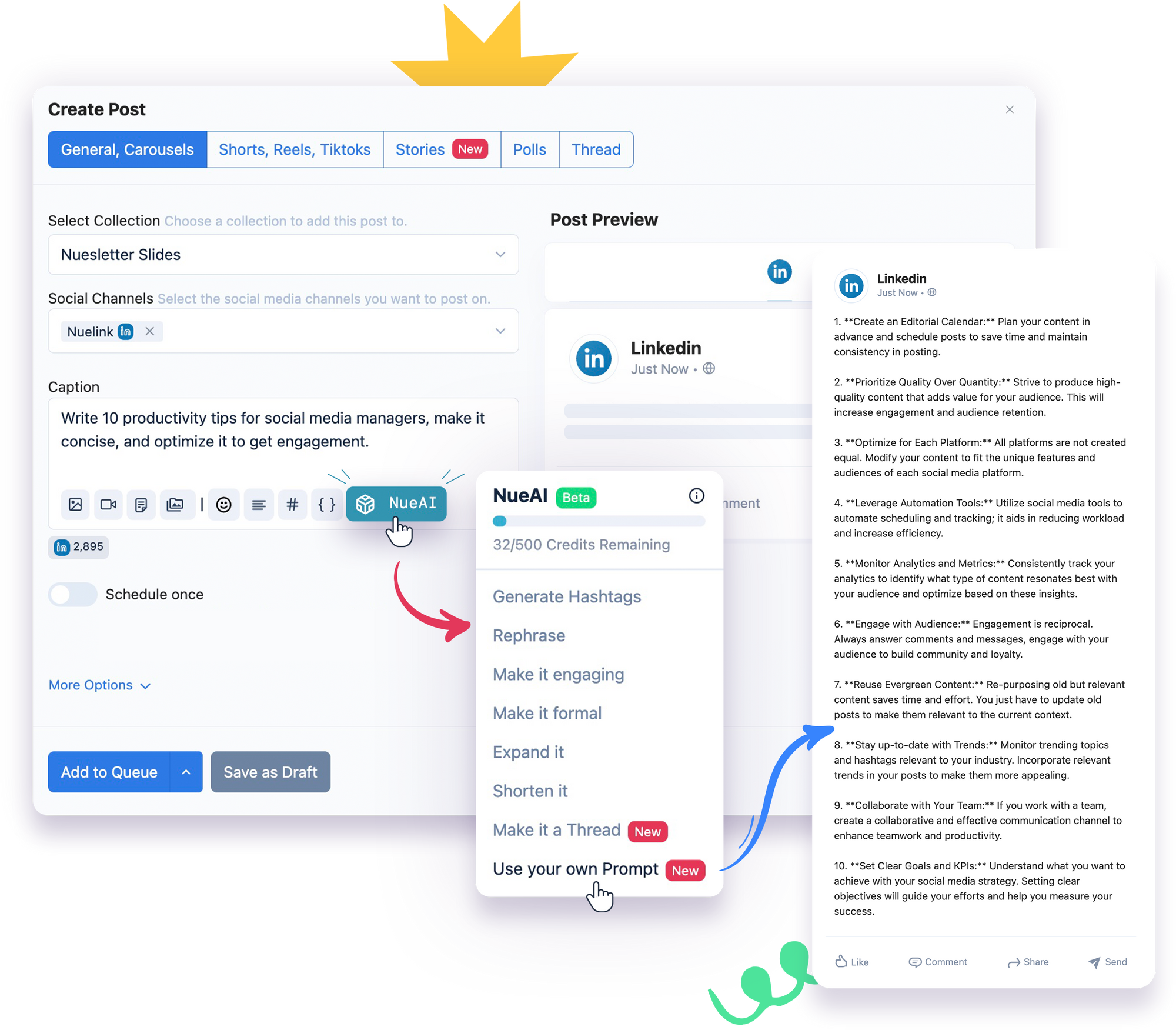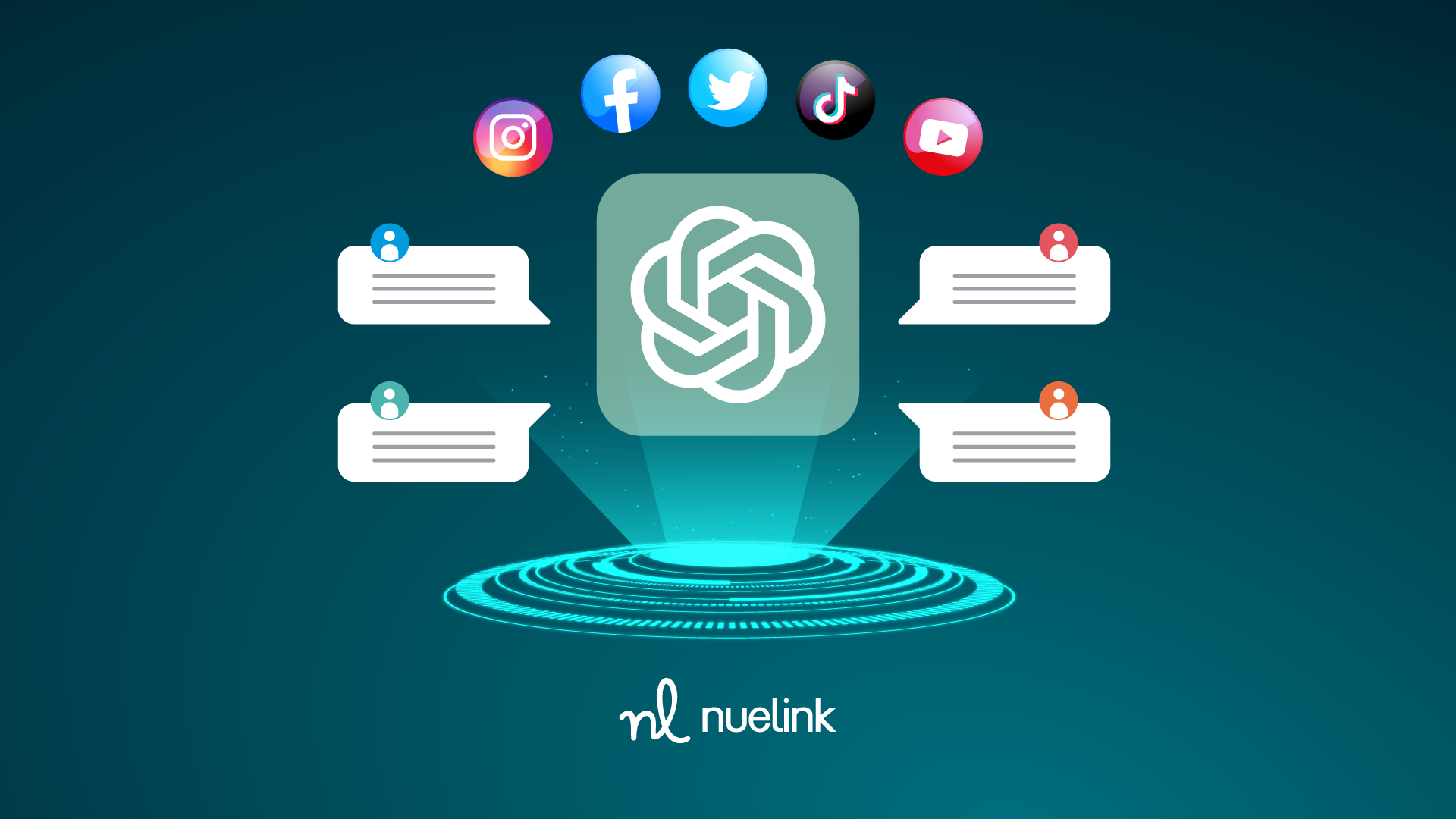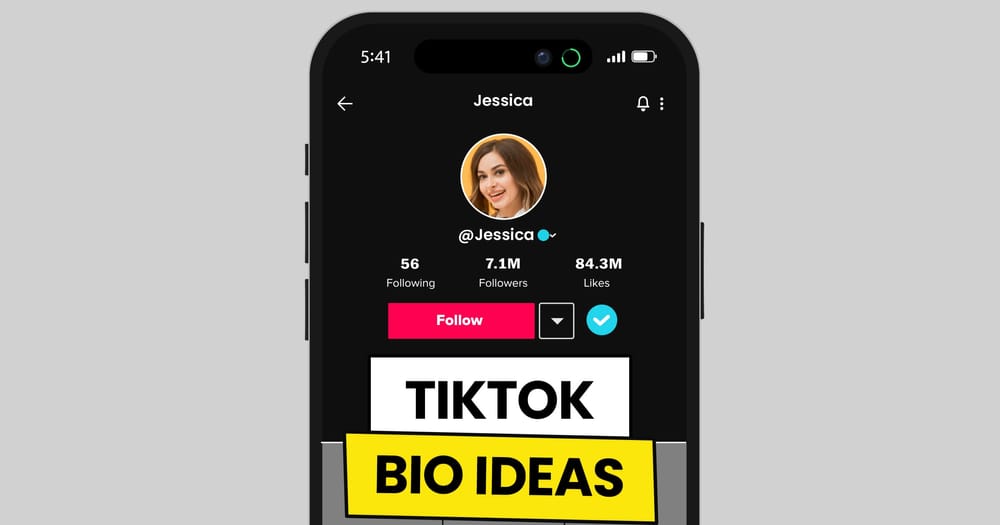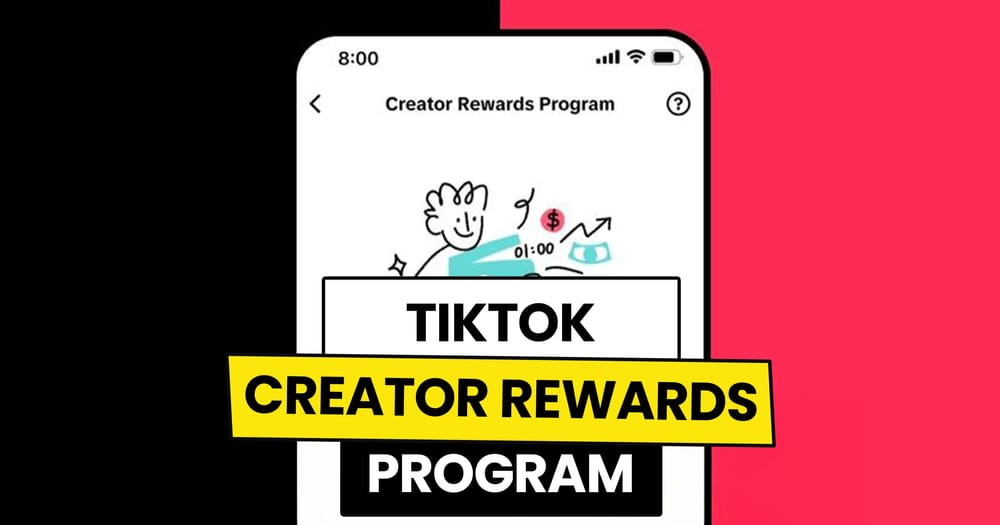Over the past few months, users have been experimenting with ChatGPT and discovering its potential in various areas. They've used it to compose poetry, ace exams, and of course social media marketing.
To truly harness the power of ChatGPT, it's essential to grasp the significance of providing detailed prompts and learn how to fine-tune them for optimal results.
And that is precisely what we'll delve into today!
Why Do Your Prompts Matter?
ChatGPT, for many, is like Google. You ask a question, and it gives an answer.
However, the AI's responses can sometimes be generic, lacking in depth, personality, or accuracy. This is where the practice of “prompt engineering” becomes crucial.
Prompt engineering involves the art of carefully crafting your input or query to ChatGPT in a way that elicits more precise, informative, and desirable responses.
Instead of engaging in casual conversation with the AI, you approach it as if you were giving a specific task or instruction to a writer.
The idea behind prompt engineering is to provide ChatGPT with clear and detailed prompts that guide it towards producing the kind of output you desire.
Here are some of best tips to get the most out of ChatGPT. And with the help of a social media management tool like Nuelink, producing and sharing content will be a walk in the park.
Tip #1: Precision is Key
Creating effective ChatGPT prompts hinges on the power of precision and detail.
Instead of: Which social media creators should my brand follow on [social media platform]?
Try: I'm looking to enrich my [social media platform] feed with content related to [niche]. Can you provide a list of the top 15 influencers, including nano, micro, and macro influencers, who are prominent in this field? Ensure there's diversity in terms of gender, age, and race among them.
The more specific and detailed your prompt, the better ChatGPT's responses will be.
When you're crystal clear about what you want from ChatGPT, you're essentially giving it a roadmap to follow. This precision helps the AI understand your needs better, resulting in more accurate and relevant answers.
So, remember, the devil's in the details when it comes to ChatGPT.
Tip #2: Context is King
When crafting prompts for ChatGPT, providing context can make all the difference.
Instead of: Tell me about the history of space exploration.
Try: I'm writing an article on the history of space exploration for a science magazine's social media channels. Please give me a detailed overview, starting from the early space race, including key milestones, breakthroughs, and notable figures involved.
Why does context matter? Well, ChatGPT thrives on it.
Contextual prompts set the stage for ChatGPT to deliver responses that align precisely with your needs.
This context helps ChatGPT provide a more in-depth, informative, and relevant response, making your interactions more productive and enjoyable.
Tip #3: Roleplay for Authenticity
When you're looking to infuse a human touch into your content, ChatGPT's acting skills can come to the rescue.
Imagine this: You want to craft a social media post on acing a job interview. Well, you can turn to ChatGPT and engage in a bit of roleplay. Request the AI to step into the shoes of a hiring manager and craft the post as if it were the real deal. This approach breathes life into your content, making it feel more personal and genuine.
To nail the art of roleplaying with ChatGPT, simply kickstart your prompt with one of these lines: Act like a…, you are a…, pretend you are a…
Instead of: Write a caption for an Instagram Reel.
Try: You are a social media manager tasked with creating a successful short video campaign on Instagram. Write an engaging caption for a Reel that talks about how to use [product] and the value it brings [value].
By initiating this roleplay, ChatGPT immerses itself in the chosen persona, enhancing your content's authenticity and relatability.
Tip #4: Craft Sequenced Prompts
Unlock ChatGPT's potential for creating tailored, top-notch content by employing chained prompting. This technique entails breaking down layered tasks into smaller, sequential chunks, resulting in a more precise and polished outcome.
Here's how it works: Imagine you're seeking content for your latest product launch. Instead of bombarding ChatGPT with a single extensive request, you can take a structured approach.
Instead of: Create a campaign for my product.
Try:
Prompt 1: Craft a compelling slogan for [product] in [industry].
Prompt 2: Give me a detailed description of the product using these [points].
Prompt 3: Write an engaging caption for a post introducing [product] and detailing how it works [usage].
By dividing the task in this manner, you guide ChatGPT through the content creation process step by step, leading to content that is not only more accurate but also better aligned with your objectives.
Tip #5: Find The Right Tone
Here's a fun tip: ChatGPT is a master at switching up its tone to suit your needs.
Whether you want something professional and serious or playful and cheesy, ChatGPT can deliver the right vibe for your content.
Just add “in [tone type] tone” to your prompt, and voilà! You'll open the door to a fresh array of responses with the perfect tone.
Instead of: Write a Twitter Thread on how to start a podcast.
Try: In a playful tone, write a Twitter Thread on how to start a podcast, include jokes and emojis while offering advice.
By experimenting with different tones, you can ensure that your content stays on-brand and resonates with your audience.
Tip #6: Stick to your Niche
Here's the golden rule for ChatGPT users: Dive deep into your niche.
The trick? Make your prompts niche-specific to ensure you get spot-on results that resonate with your target audience.
Rather than: What are the top trends on [platform]?"
Tailor it to your niche: Craft a list of the top 10 trends within [niche] on [platform] and how to utilize them.
By zeroing in on your niche, you're steering ChatGPT toward producing content that's laser-focused and highly relevant. So, remember to niche it up when prompting ChatGPT for the best results. Your audience will thank you for it!
Tip #7: Verify Your Content
Let's talk about a vital aspect of using ChatGPT: fact-checking.
You've probably heard about AI “hallucinations” which can lead to unexpected results. For instance, a lawyer was in hot waters when he used ChatGPT to write a brief for his case. ChatGPT “hallucinated” a few cases to support its argument, and the judge wasn’t too pleased, to say the least.
That's why it's crucial to fact-check your ChatGPT-generated content. You're not only ensuring its accuracy but also confirming that it aligns with your brand's tone and style.
This tip holds extra weight for social media managers operating in regulated industries. Always ensure that your AI-crafted content goes through your standard compliance process before hitting that "post" button.
And, if you don’t want to engineer prompts yourself, here’s a list of our favorite social media marketing ChatGPT Prompts. Or better yet, use Nuelink's AI tool to write captions for your post and then posting it to all of your social media channels in one go.

ChatGPT can be a valuable tool for improving your content creation process. Whether you want to add a human touch, be more precise with your prompts, adjust the tone, or focus on your niche, ChatGPT has you covered. Just remember to fact-check your content and ensure it matches your brand's style.
If you are a Nuelink user, you can skip ChatGPT altogether and stick to using NueAI to write your prompts.






